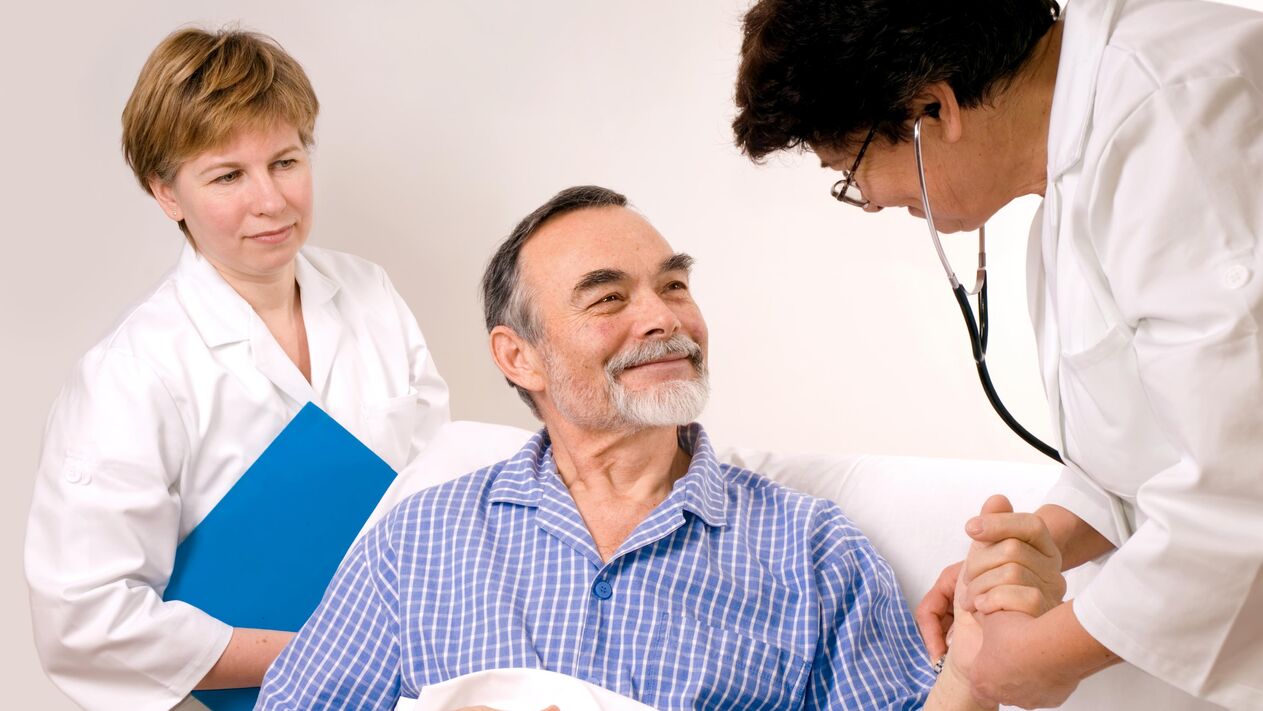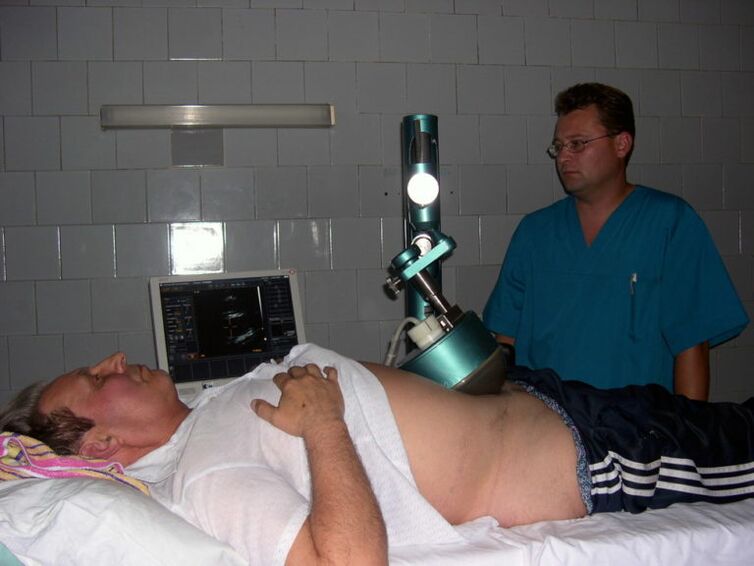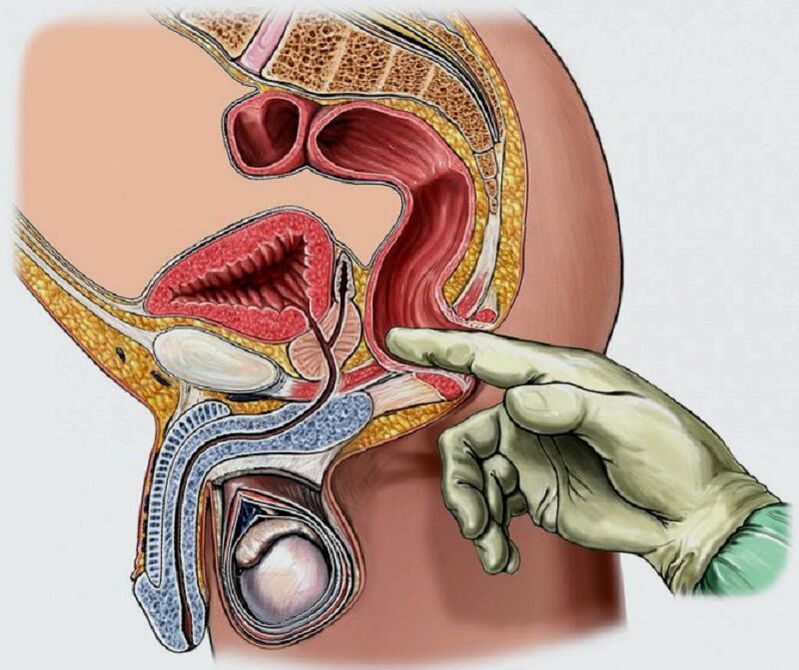Almost all men perceive urological diseases as terrible discomfort, monotony and inability to lead a normal life. Many people think about how to treat prostatitis, but not everyone decides to quickly "publicize" the problem and share the news of life, even with a doctor.

Before secretly accessing information on the Internet or asking close friends, keep in mind that prostatitis is an individual disease and therefore requires careful and gentle treatment. You should not think that such a male problem is specific only to antisocial people who lead an uncultured lifestyle or people who have lost the number of "sexual victories".
Some infectious types of prostatitis:
- Bacterial. The reason for the appearance of this type of infectious prostatitis is an active effect on the body of bacteria: Escherichia coli, staphylococcus aureus, Pseudomonas aeruginosa and streptococcus. These microorganisms can enter the prostate directly or through blood or lymph from other organs.
- Viral. The reason is the activation of cytomegalovirus, herpes virus and human papillomavirus, which can threaten not only the prostate gland, but also other organs.
- Mycoplasma. They are caused by intracellular organisms - mycoplasmas, which contribute to other inflammations of the genitourinary system.
- Trichomonas. The simplest cause in men is Trichomonas.
- Gonorrhea. This type of pathogen - gonococcus can also cause prostatitis at any age.
- Chlamydia. Intracellular organisms in men are the most common cause of chlamydia.
- Tuberculosis. Koch's rods in the prostate gland are most often transmitted from other organs, indicating a serious illness in a person with tuberculosis.
- Mushrooms. It is most likely a non-infectious prostatitis because it is caused by the person's own microflora - Candida fungi, which are activated when the body's overall immunity is reduced or when uncontrolled intake of antibiotics.
- Mixed. There are prostate lesions with two or more types of infections, but fortunately they are rarely recorded because it is very difficult to completely cure this type of prostatitis.
What does medicine offer?
Treatment of prostatitis is the process of removing inflammation or blockage in the prostate gland. This is true, but it should be understood that it can be successfully treated only if the cause of its occurrence is eliminated. But how to properly treat prostatitis in men?
For treatment in a sanatorium, outpatient setting, or the best clinic hospital, you should always start with a diagnosis by identifying the cause of the man's problem. With a swab from the urethra, it is necessary to determine why the pain in the lower back and abdomen begins, and whether there is an infection or bacteria in the prostate. In case of infectious-bacterial causes, antibiotic therapy is prescribed. In each case, its timing depends on the degree of infection and damage to the body.
At the age of 25, prostatitis most often occurs as a result of systemic hypothermia. Following the fashion trend, starting in the transition period, young men wear "terribly beautiful" clothes, not hot things (jeans). Therefore, antibiotic therapy will be required in this condition, but not so seriously.
Stress factors that cause prostatitis should be treated by a neurologist. Electrophoresis, relaxing massage and vitamin therapy are often prescribed.
It is important! If the cause of prostatitis is not eliminated, then any treatment can be not only useless, but also dangerous.
Basic treatment regimen

Prostate disease is very dangerous, so only a doctor should prescribe a course of therapy.
How to treat prostatitis most effectively? The most commonly used methods are described below:
- Antibacterial drugs. It is effective only when prostatitis is contagious in nature.
- Alpha blockers. They move in the smooth muscles of the prostate gland, which helps it to recover faster.
- Hormonal agents. They help to quickly eliminate hormonal disorders in a person's body.
- Muscle relaxants. Relieve tension in the skeletal muscles of the prostate.
- Phytopreparations. The drug is based on plant components and is used as an adjunct in the treatment of prostatitis.
- Physiotherapeutic methods.
- Popular folk remedies.
- Surgical intervention. It is only prescribed if all of the above methods are not effective.
Problem solving methods
Laser therapy or laser treatment of prostatitis is used for semi-acute and chronic forms of prostate disease. This increases the body's defenses and heals pain. The bladder should be partially filled before the procedure.
In the chronic form of prostatitis, lasers are often used in combination with medications. It is effective in severe forms of prostatitis without symptoms. Men may feel better after the first course of laser procedures.
Instructions for using the laser:
- congestive and bacterial forms of chronic prostatitis;
- urogenital infections;
- copulative dysfunction and interreceptive infertility detected as a result of prostatitis;
- prostatitis with neurovegetative prostatopathy and prostate adenoma;
- narrowing of the urethra.
Innovation in the treatment of prostate gland - a patch for prostatitis (for more information, visit the link! ). According to an ancient recipe, the urological umbilical patch made in China contains extracts of medicinal plants (saffron dye, cinnamon, Asian plantain, girdle, double stone, suspicious Corydalis and Bornean camphor).
This complex has a strong stimulating effect on the prostate gland in both 19-year-old boys and adult men, increases blood circulation and reduces inflammation. Its use effectively relieves pain in the scrotum and perineum, stops the development of edema and improves the process of urination. Of course, non-specific prostatitis cannot be treated with a single patch, additional antibiotic therapy will be required.
Chinese healers call it a "patch for real men" and are confident that prostatitis can be treated at home and actually get rid of the disease in a few months, because the therapeutic effect of a patch lasts at least 3 days. Some experts are somewhat skeptical of the statements of their Chinese colleagues and do not undertake to give an unequivocal answer as to whether it is possible to completely cure prostatitis with one patch. This question is still open.
Antibiotic therapy for prostatitis
When an infection is detected, doctors prescribe drugs that are sensitive to certain microorganisms. It should be noted that not all antibiotics can enter the tissues of the prostate gland, which sometimes complicates the healing process.
When the infection is not completely eradicated, relapses of the disease are possible.
Antibiotic groups for prostatitis:
- fluoroquinolones;
- macrolides;
- cephalosporins (3rd generation);
- penicillin group;
- tetracycline.
The course of treatment should last at least 4-8 weeks. Each drug is prescribed only by a doctor and only after examining the patient.
Alpha-blockers can be used to treat sphincter opening disorders. Smooth muscle spasms should be treated as soon as possible to increase the rate of urination in men and reduce urinary pressure in the walls of the bladder. The course of treatment is at least 1, 5-2 months.
Can prostatitis be treated with hormone therapy? In their single use - no. They are effective only in combination with other procedures, help to normalize hormonal levels in the body of men, reduce the number of glands in the tissues of the prostate gland, resulting in less intense inflammation.
Physiotherapy methods

Physiotherapy can be an excellent adjunct to the fight against the disease.
Physiotherapy methods that can be used to treat pathology include:
- to massage directly into the prostate gland;
- strengthening (relaxation) of pelvic muscles;
- effect on trigger (myofascial trigger) points;
- acupuncture;
- neuromodulator therapy.
let's put leeks?
Today, the treatment of prostatitis with leech has been reborn. To treat prostate diseases with hirudotherapy, you need a doctor's knowledge and good qualifications. Leeches can not be placed on some areas of the skin - in areas where the skin is inflamed and very thin, there is a possibility of prolonged bleeding.
"Bloodsuckers" with prostatitis are placed in the anus according to the scheme "X", where the center of the letter is the anus, and the ends are leeches. According to another scheme, the lesions are glued to each side of the middle suture of the perineum by pulling back 2 cm. Usually no more than 4 leeches are glued to one session, the whole course lasts about 4-5 days with mandatory intervals. week.
How prostatitis was treated among the people
Men have always had prostate problems, so don't think it's a "21st century disease. "How to diagnose prostatitis was known in ancient times. All folk remedies can be combined with basic methods, as well as preventive measures for young men. The most popular remedies are propolis, parsley, pumpkin seeds and red root.
Surgical intervention
Surgery for prostatitis is indicated only when it is vital. In other cases, doctors try to avoid surgery in such a delicate place.
The operation is scheduled only in some cases:
- Obstruction of the urethra, when there is a narrowing of the urethra. At the same time, it is impossible to go "small" and the only way out is surgery. In most cases, phimosis is added to the obstruction when it is difficult to open the glans penis.
- Drainage of the prostate abscess. With the accumulation of pus in the tissues of the prostate, it is necessary to remove it and rinse the cavity. All manipulations are performed using a special needle.
- Seminal vesicles recover when they lose their function due to inflammation, so it is difficult to remove prostate secretions.
- Partial or complete removal of the prostate. Required for sclerotic changes in the prostate gland or adenoma. It is prescribed only when all methods do not give a positive result.
Physical training
Because prostatitis is associated with obstruction, it can be treated with an integrated approach, including the use of simple sports exercises. It is necessary to increase the blood supply to the prostate gland and its oxygen supply. To do this, you need to perform a series of exercises that will increase blood flow to the muscles.
Useful:
- walking;
- escape;
- squat;
- press exercises.
Well-known maple exercises can be easily done at home several times a day.
Massage

A combination of medication and prostate massage gives good results in the treatment of the disease.
A method based on mechanical action on body tissues with the hands or special devices. The essence of the procedure is that the receptors on the skin and muscles receive irritants and transmit them to the central nervous system. As a result, the tone of the central nervous system increases, and through it has a positive effect on the functioning of all physiological systems.
Treatment measures
Contraindications for prostatitis should be considered when choosing any treatment.
- It is not possible to analyze prostate secretions due to severe pain, and in some men, this procedure can cause pain shock. You should not perform any physiotherapeutic procedures (massage, warming, etc. ).
- Drinking and smoking are strictly prohibited, as it causes venous circulatory disorders and prostate irritation. Proper nutrition is the key to a healthy prostate gland, so avoid soda, energy drinks, smoked meat, spicy and fatty foods.
- In acute and bacterial forms of prostatitis, in malignant neoplasms of the prostate, in the presence of stones and urinary incontinence, massage is not performed. Also, do not massage with hemorrhoids, proctitis, paraproctitis, adenoma and some diseases of the urinary system.
- In chronic prostatitis, mud therapy, sunbathing and water treatments are not possible, which can lead to overheating or hypothermia.
And finally, a less important question - where to treat prostatitis? Only in a specialized clinic under the supervision of a physician. Some procedures can be done at home, but they must be agreed with the attending physician. Remember that a healthy prostate is a man's comfort, a quiet intimate family life and a strong offspring.



























